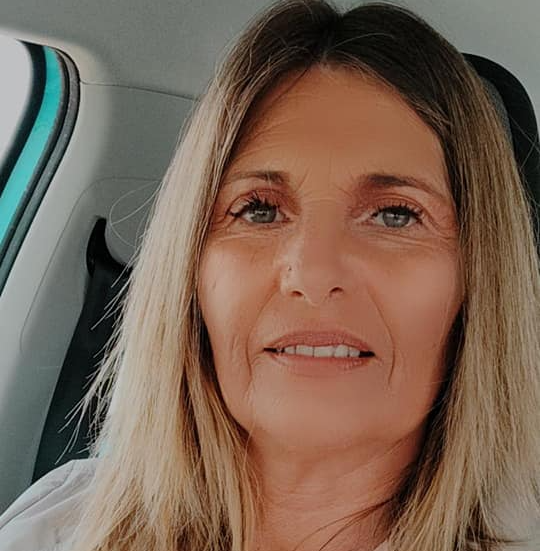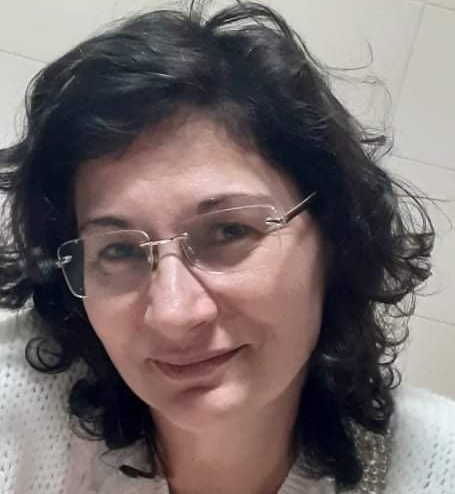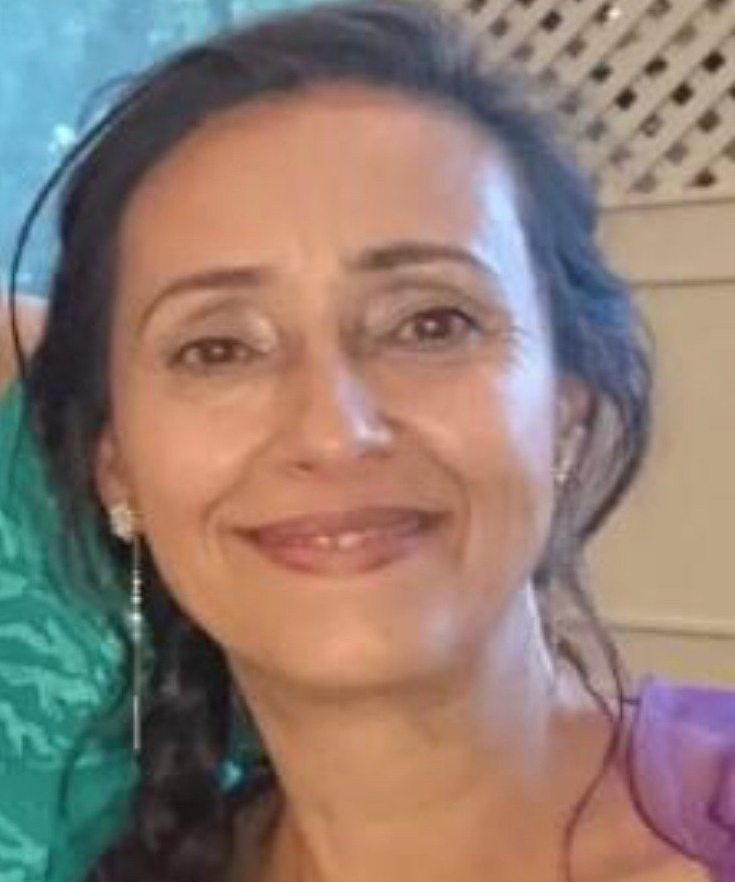Marco Mateus
Transformative Treatment
of Psychosis,
Schizophrenia,
Borderline,
Bipolar Disorder,
Adolescents and Adults
Online sessions in Portuguese and English
Marco Mateus
Natural treatment for psychosis
in adolescents and adults
ONLINE SESSIONS IN PORTUGUESE AND ENGLISH
Marco Mateus
Natural treatment for psychosis
in adolescents and adults
ONLINE SESSIONS IN PORTUGUESE AND ENGLISH
Marco Mateus
Transformative Treatment of Psychosis,
Schizophrenia,
Borderline,
Bipolar Disorder,
Adolescents and Adults
Online sessions in Portuguese and English
This Natural treatment is consulting and guidance that can help people who are diagnosed with or have symptoms of psychosis, schizophrenia or bipolar disorder and who share at least 1 of the psychotic symptoms such as delusions, hallucinations, disorganized thinking and speech, inappropriate behavior or paranoia.
This Treatment can help people who are diagnosed with or have symptoms of psychosis, schizophrenia or bipolar disorder and who share at least 1 of the psychotic symptoms such as delusions, hallucinations, disorganized thinking and speech or inappropriate behavior.
Success Stories

Nadine C., Inês' mother
(…)The truth is that, as weeks passed by, results were visible, medication was no longer necessary and Inês learned to live again, and above all, she once again enjoyed living in society. Thank you, life. Thank you, Marco!

Natália M.
(…)Today I have found inner peace, I started to have feelings (I always had emptiness inside) and most importantly, I have found a sense of balance within myself, which I thought impossible because of my diagnosis. Thank you Dr. Marco, and always stay the person that you are!

Inês S. F.
(…) All the prescription drugs I had been taking for years, which I was told I would have to take them for the rest of my life, were reduced to zero and I ceased to have psychosis. I did not need to hide the problem. I needed to address it and learn to cope with it. Today I am very happy. (…) Today, I am a great Woman!

Linda F.
I started online sessions with Marco after being hospitalized for 2 years with anorexia and psychotic events, severe depression and suicidal thoughts. They were no longer able to help me in the clinic. (…) Thanks to the intentional sessions, I have peace of mind again (…). I would recommend Marco to everyone.

Elsa F., Sara's mother
(…) Sara began to have a "lifeless" life (…). After years of visits to private practitioners and hospitals, nothing worked. (…) Contrary to what many doctors have told me, Sara has improved a lot with Therapist Marco Mateus. (…). We are endlessly grateful to Therapist Marco Mateus from all our hearts for his contribution and help in this journey.

Inês A.
(…) I met Marco after being diagnosed with a major depressive disorder and several suicide attempts. (…) Marco is an excellent professional in his field and now also a friend, I recommend him to all those who want to learn how to live better. With him, I have learned to see life from a completely new perspective.

Helena Jeronimo
I have managed Dr. Marco’s schedule for some years, and I had the opportunity to see how his work transformed other people's lives. (…) People who have been discharged from mental health institutions, who have attempted suicide and who are now getting on with their lives. (…) With all the confidence I recommend Dr. Marco Mateus as a therapist.

Nadine C., Inês' mother
(…)The truth is that, as weeks passed by, results were visible, medication was no longer necessary and Inês learned to live again, and above all, she once again enjoyed living in society. Thank you, life. Thank you, Marco!

Natália M.
(…)Today I have found inner peace, I started to have feelings (I always had emptiness inside) and most importantly, I have found a sense of balance within myself, which I thought impossible because of my diagnosis. Thank you Dr. Marco, and always stay the person that you are!

Inês S. F.
(…) All the prescription drugs I had been taking for years, which I was told I would have to take them for the rest of my life, were reduced to zero and I ceased to have psychosis. I did not need to hide the problem. I needed to address it and learn to cope with it. Today I am very happy. (…) Today, I am a great Woman!

Linda F.
I started online sessions with Marco after being hospitalized for 2 years with anorexia and psychotic events, severe depression and suicidal thoughts. They were no longer able to help me in the clinic. (…) Thanks to the intentional sessions, I have peace of mind again (…). I would recommend Marco to everyone.

Elsa F., Sara's mother
(…) Sara began to have a "lifeless" life (…). After years of visits to private practitioners and hospitals, nothing worked. (…) Contrary to what many doctors have told me, Sara has improved a lot with Therapist Marco Mateus. (…). We are endlessly grateful to Therapist Marco Mateus from all our hearts for his contribution and help in this journey.

Inês A.
(…) I met Marco after being diagnosed with a major depressive disorder and several suicide attempts. (…) Marco is an excellent professional in his field and now also a friend, I recommend him to all those who want to learn how to live better. With him, I have learned to see life from a completely new perspective.

Helena Jeronimo
I have managed Dr. Marco’s schedule for some years, and I had the opportunity to see how his work transformed other people's lives. (…) People who have been discharged from mental health institutions, who have attempted suicide and who are now getting on with their lives. (…) With all the confidence I recommend Dr. Marco Mateus as a therapist.

Nadine C., Inês' mother
(…)The truth is that, as weeks passed by, results were visible, medication was no longer necessary and Inês learned to live again, and above all, she once again enjoyed living in society. Thank you, life. Thank you, Marco!

Natália M.
(…)Today I have found inner peace, I started to have feelings (I always had emptiness inside) and most importantly, I have found a sense of balance within myself, which I thought impossible because of my diagnosis. Thank you Dr. Marco, and always stay the person that you are!

Inês S. F.
(…) All the prescription drugs I had been taking for years, which I was told I would have to take them for the rest of my life, were reduced to zero and I ceased to have psychosis. I did not need to hide the problem. I needed to address it and learn to cope with it. Today I am very happy. (…) Today, I am a great Woman!

Linda F.
I started online sessions with Marco after being hospitalized for 2 years with anorexia and psychotic events, severe depression, and suicidal thoughts. They were no longer able to help me in the clinic. (...)Thanks to the intentional sessions, I have peace of mind again. (...) I would recommend Marco to everyone.

Elsa F., Sara's mother
(…) Sara began to have a "lifeless" life (…). After years of visits to private practitioners and hospitals, nothing worked. (…) Contrary to what many doctors have told me, Sara has improved a lot with Therapist Marco Mateus. (…). We are endlessly grateful to Therapist Marco Mateus from all our hearts for his contribution and help in this journey.

Inês A.
(…) I met Marco after being diagnosed with a major depressive disorder and several suicide attempts. (…) Marco is an excellent professional in his field and now also a friend, I recommend him to all those who want to learn how to live better. With him, I have learned to see life from a completely new perspective.

Helena Jeronimo
I have managed Dr. Marco’s schedule for some years, and I had the opportunity to see how his work transformed other people's lives. (…) People who have been discharged from mental health institutions, who have attempted suicide and who are now getting on with their lives. (…) With all the confidence I recommend Dr. Marco Mateus as a therapist.
Conventional treatment problems
What is the conventional understanding of psychosis?
Conventional thinking: psychosis is a serious mental illness where the individual has difficulty in having normal thought patterns and distinguishing between fantasy and reality. Symptoms include delusions, which are untenable beliefs about oneself and/or others, as well as behavioural, thought and perceptual disorders with auditory, visual, tactile or olfactory hallucinations.
Conventional treatment
Conventional psychiatry makes use of drugs such as neuroleptics (antipsychotics), tranquillisers and antidepressants and, in the case of acute crisis, hospitalisation.
-
Learn more
Drug therapy risks
Antipsychotic drugs always have adverse effects: neurotoxicity, akathisia (motor restlessness), neuroleptic malignant syndrome (NMS), delirium, hypothermia, hyperprolactinaemia (high prolactin levels), tardive dyskinesia (TD), endocrine changes (absence of menstruation, weight gain, and sexual dysfunction), sialorrhoea (drooling), postural hypotension and blepharospasm (chronic eyelid twitching).
Medication is not a treatment, but an alleviation of "psychotic symptoms".
Taking antipsychotic drugs for long periods increases the risk of becoming chronically ill, as well as having potentially irreversible psychological and physical consequences.
Inability to adapt to medication is also common, which increases the profile of adverse effects, leading to further psychological and emotional distress. Often, medication adjustments take years until they are 'right'.
The problems of conventional diagnosis and intervention
Personally speaking, I have nothing against physicians, medication or hospitals, because I know people who have benefitted from pharmacotherapy. The problem is that this is seen as ‘the one’ model that can actually work and help anyone, considering these issues from a purely biological point of view with pharmacotherapy as the only solution.
This is the so-called objective science, though this might not be the case here, especially because only a number of clients seem to benefit from pharmacotherapy.
In my opinion, the diagnostic belief that psychosis is a serious mental illness is a deep reflection of the sociocultural problems we have in our world today.
We live in a fast-paced world that prioritises economic profit rather than human beings. The biggest obstacle is the conventional and old-fashioned way that psychology and psychiatry view human beings. The DSM, which stands for “Diagnostic and Statistical Manual of Mental Disorders”, is a diagnostic manual that describes people as broken entities, in addition to being a sophisticated method that does not really listen to people, from my point of view.
This manual is a tool that grants great social authority to those who use it. I would like to mention that "serious mental illnesses" bring many difficulties to those who do not adapt to pharmacotherapy, thus clients end up becoming more socially disconnected and ill.
The vision I share
What is psychosis?
Psychosis is a natural process that anyone can experience. I do not consider psychosis to be a serious mental illness, but an opportunity offered by the individual's brain to cope with some mental processes. In other words, it is a pressing need of the brain to organise one's ideas.
Psychosis occurs in the brain of a person who has not adapted to their environment and who finds an outlet to manifest itself, due to biological and social factors.
The person also unwittingly creates a hyper-meaning associated with the surrounding world. Other less controversial views are a “cry for help” such as a spiritual awakening or the person’s need for expanded consciousness.
-
Learn more
The cause of psychosis
Psychosis is a natural consequence of a person’s exposure to a highly distressing psychological and physiological event. This derivative of the psychological part, manifests itself from a neurosis or a moment of imbalance in life, often from circumstances related to the community in which one lives, religion or spirituality.
Psychosis that is arising from the physiological part can be the consequence of substance abuse or genetic tendencies, but can also be caused by serious diseases (in rare cases). The main cause of psychosis is nearly always a combination of several of the aspects mentioned above, among other factors.
Risks and benefits
A lifetime of depression, anxiety or other neurosis is deemed socially "normal", whereas psychotic symptoms are not deemed acceptable in our society. This way of thinking has devastating consequences in personal, family and social life.
Compared to other disorders, psychosis is a crisis of great relevance and intensity.
This means an opportunity for big and definitive change, not the need for medicinal alleviators, which increase the risk of long and chronic periods of illness.
The person that develops symptoms of psychosis has unique and very important intellectual, physical, intuitive and sensory experiences. These experiences must be recognised and integrated into the development of a person, who should not be oppressed by fatalistic and demeaning diagnosis.
The real risk for those who develop psychosis is not psychosis itself, but...:
- Accepting a conventional, dramatic and/or fatalistic diagnosis of psychosis, schizophrenia, bipolar and/or borderline personality disorder, or other psychological conditions;
- Undertaking pharmacotherapy as the preferred therapy of choice;
- Difficulties in adapting to short and long-term medication;
- Being stigmatised within the family and society;
- Not finding specialised therapeutic treatment.
On the plus side, those who develop symptoms of psychosis can display the following positive traits:
- A charismatic personality;
- Intellectual and physical abilities;
- Communication skills;
- A high IQ score;
- Artistic skills;
- Intellectual focus and ability to internalise complex knowledge;
- Intuitive abilities and acute sensory sensitivity;
- The ability to become a therapist;
- Spiritual awakening or expanded consciousness.
My therapeutic approach
My approach to the treatment of psychosis, schizophrenia and bipolar disorder is consulting and holistic Guidance that involves:
1. A welcoming environment
The person is sincerely welcomed and deeply understood, despite all their differences and needs. Furthermore, and contrary to popular belief, we can conduct many sessions in a light and fun way while working on what is important.
-
Learn more
2. Relationship with pain
For many people, the idea that, during therapy, you have to talk about trauma, go through moments of great pain or emotional distress is a common belief as well as scary.
In this therapy, these methods are not used, as they are considered counterproductive.
The emphasis is on organising, stimulating, using and directing the client’s abilities and, if there is an actual need to work on trauma, this is done in a sophisticated, “surgical” and rapid manner, without the person having to talk about things they do not want to.
3. The therapeutic process is always personalised and includes:
- Finding meaning in the presented difficulties;
- Organising one’s world of ideas;
- Sorting out double binds (specific confusion thoughts);
- Organising one’s emotions;
- Organising one’s perceptions, helping the individual to distinguish internally generated fantasies from external reality;
- Reducing, eliminating and controlling hallucinations and delusions;
- Better understanding the metaphorical language of hallucinations and delusions;
- Working on possible trauma;
- Developing a more sustainable sense of SELF;
- Developing flexibility during altered states of consciousness;
- Developing new physical and psychological awareness during social interactions,
- Involvement and guidance of the family in the treatment process,
- Technical-mental training,
- Homework,
- Suggestions for optimising mental and physical well-being.
4. The therapeutic process is natural, without prescription drugs.
The person, who is not on pharmacotherapy, can start the treatment naturally, without any medication.
The person who is on prescription drugs and still has symptoms can start a natural treatment. After significant improvement, they can start to reduce the medication under the supervision of their psychiatrist.
5. Therapy Completion
The duration of treatment is assessed on a case-by-case scenario, but usually ranges from a few weeks to six months. Therapy is completed when the person is free of the symptoms of psychosis, is psychologically and emotionally stable and no longer takes medication.
After treatment, in some cases, the person may experience minor symptoms from time to time, but they have the skills to manage these naturally and continue their normal life. In about half of the people, there are clear improvements after the first few sessions, which makes it easier for many to get on with their academic or professional life, if necessary.
One maintenance session is recommended within one year after the end of treatment.
What benefits can be expected from this natural therapy?
Clients can find themselves recovered or attain significant improvements.
What are the requirements for therapy?
The client’s willingness and desire to improve.
Who can benefit from this therapy?
The age group that benefits the most from this therapy are teenagers and young adults.
The second group that benefits the most is those who are experiencing the symptoms of psychosis for the first time.
The third group that benefits the most are those who live with symptoms of psychosis, schizophrenia and other constraints, but manage to work and have a more or less active social life.
The fourth group consists of people living with psychosis, schizophrenia and other constraints, who doesn’t work and/or have an active social life, thus seeking balance in a more natural way.



